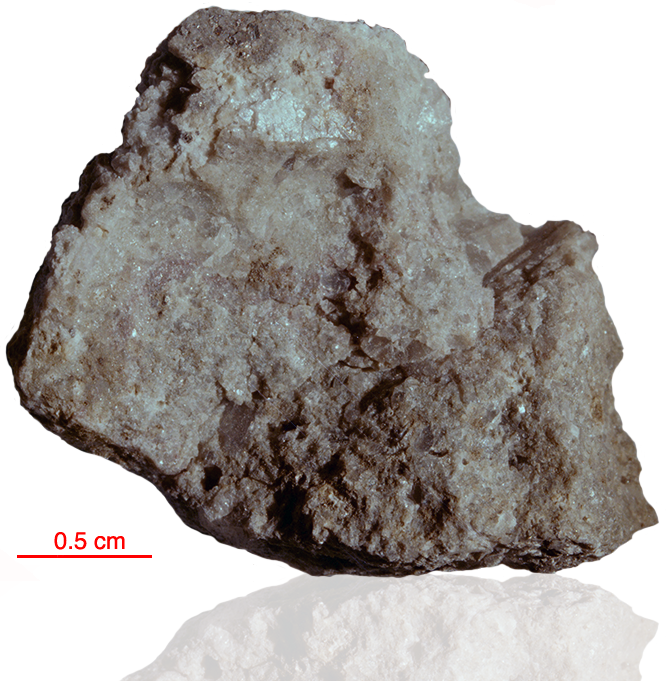
Fact sheet
60018 was broken off of a corner of a 40 cm boulder. The most obvious feature in thin section is the highly shocked plagioclase feldspar (rotations 1 & 2). In places the texture is variolitic and probably represents recrystallised impact melt in which a second generation of plagioclase feldspar forms almost needle-like crystals. The reflected light view shows significant metallic iron and troilite is present.
The sample weighed 1501 grams before analysis and has not been dated with certainty.
Further details of this and other Apollo samples are here: http://curator.jsc.nasa.gov/lunar/
Our thin section is slightly thick so between crossed polars some plagioclase crystals are yellow instead of shades of grey.
The Apollo 16 landing site was in the hilly region around Descartes crater in the lunar highlands. The landing spot was chosen to allow the astronauts to gather geologically older lunar material (Descartes Formation and the Cayley Formation) than the samples obtained in the first four landings, which were in or near lunar maria.
The mission lasted 11.1 days, with a stay on the lunar surface of 71 hours. The crew were on the lunar surface for 20.2 hours during which they traversed approximately 27 kilometers and collected approximately 96 kilograms of samples.
Apollo 16 was launched on 16 April 1972.






